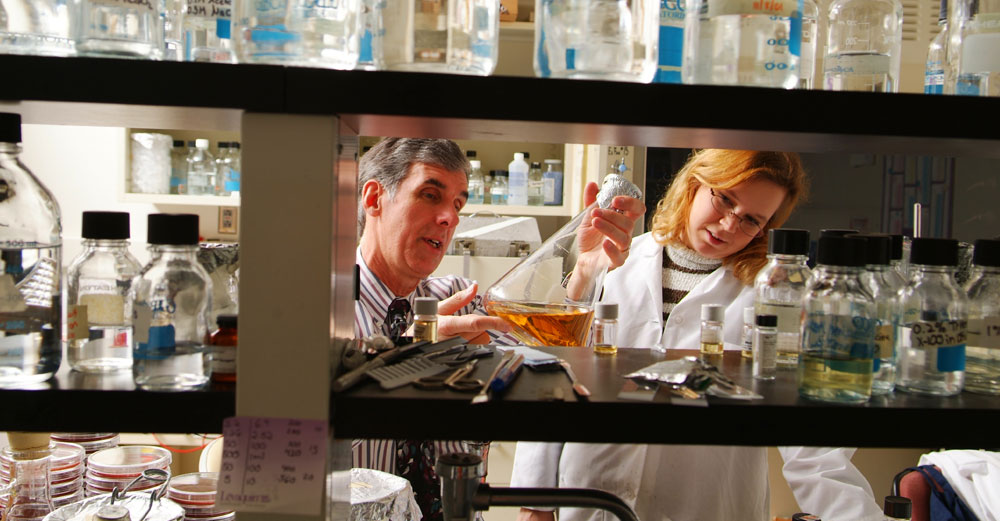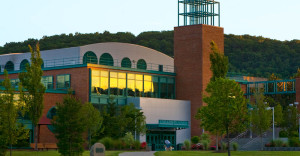
We all get sick. Luckily for us, there are many care options available to remedy our afflictions, from small viruses to major illnesses and injuries. Its thanks to the strength of our medical care and research programs here in the United States that we have these options at our disposal. Now, Stony Brook University and the University at Buffalo have joined a group of elite institutions that are working with federal support to transform biomedical research into next-generation medical solutions.
In April 2015, the National Institutes of Health (NIH) granted Stony Brook’s Center for Biotechnology $3 million over three years to form the Long Island Bioscience Hub (LIBH). Two world-renowned institutions, Cold Spring Harbor Laboratory and Brookhaven National Laboratory, are collaborating with Stony Brook on the LIBH.
In August, the NIH awarded UB a four-year, $16 million Clinical Translational Science Award (CTSA) to establish the Buffalo Translational Consortium (BTC). UB is also working with prestigious partners—the Roswell Park Cancer Institute, the Great Lakes Health System and UBMD, the largest physicians’ group in Western New York—plus numerous community organizations.
Bioscience comes to Long Island
The LIBH was one of only three initiatives nationwide to win funding in 2015 from the NIH’s Research Evaluation and Commercialization Hub (REACH) program. Based at Stony Brook’s state-of-the-art Center for Biotechnology, the LIBH builds on that facility’s work to turn scientific discoveries into new drugs, diagnostics and medical devices. Staff at the LIBH—including experts on business development and intellectual property law—will help researchers look beyond the goals of basic science, with an eye toward creating new technologies.
Undoubtedly, the LIBH will inspire some researchers to start companies. “But our goal is not to change all these great faculty into entrepreneurs,” says Clinton Rubin, PhD, distinguished professor, chair of Stony Brook’s Department of Biomedical Engineering and director of the Center of Biotechnology, who serves as principal investigator for the NIH grant. The aim is broader—to help scientists protect and commercialize intellectual property that could eventually yield health care innovations.
The LIBH will serve as a matchmaker, finding opportunities for researchers to collaborate on groundbreaking advances in health care. “If Faculty X is an expert on stem cells, and Faculty Y is an expert in material sciences, they might not realize that their contributions, if coupled, could represent a new frontier in tissue engineering,” Rubin says. The LIBH can bring them together. It will also make grants to researchers at the three partner institutions, and offer mentoring to help them transform their discoveries into biomedical technology with commercial potential.
Medical collaborations in Buffalo
The BTC is based in the Clinical and Translational Research Center, a 170,000-square foot facility that UB opened in 2012 on the Buffalo Niagara Medical Campus. This consortium will focus on streamlining translational research that involves not just laboratory work and clinical trails, but also studies to examine how new treatments perform in communities and across whole populations.
“One of the biggest challenges in translational research is recruiting subjects for clinical trials,” says Timothy Murphy, MD, distinguished professor of medicine, microbiology and immunology at UB’s Jacobs School of Medicine and Biomedical Sciences, and principal investigator on the CTSA grant. “Three-quarters of clinical trails in this country are not completed because they don’t enroll enough people, or they don’t enroll them at a fast enough rate to make the trial worthwhile.”
BTC staff will work with consortium members, including community organizations and medical practices, to boost enrollment in clinical trails at UB and its partner institutions. The CTSA is supporting new staff members who will use several strategies to engage the community in clinical research. These include innovative bioinformatics approaches to identify potential volunteers for various studies, using electronic health records systems.
A second big challenge in translational research lies in regulatory obstacles that researches encounter when seeking approval from the U.S. Food and Drug Administration (FDA) for new drugs, vaccines and devices—a long, slow process. One such obstacle can be gaining prompt approval for a clinical trial from an institutional review board (IRB), Murphy says. With support from the CTSA, staff have been hired to help move projects more quickly toward approval.
Under a workforce development initiative, the consortium will train scientists in how to conduct clinical and translational research. It will also provide a range of training opportunities for research coordinators, data managers, graduate students and fellows—anyone who might become involved in clinical and translational projects.
The BTC is a prime example of how SUNY promotes research by creating new institutions that can to pursue large grants. With the CTSA award in hand, the BTC may now compete for a series of NIH grants for collaborative projects in clinical and translational research, open only to CTSA hubs.
“Some of our folks are already working with other CTSAs on projects related to bioinformatics and other disciplines. But now we’re eligible to take part in those formal proposals,” Murphy says. Other areas where BTC might pursue funding, he says, include early stage drug development and community engagement.
Medical care and beyond
Besides pushing the boundaries of patient health care, the Stony Brook and UB consortia both stand to make significant contributions to New York State’s economy. Stony Brook’s Center for Biotechnology has spurred the creation of 1,125 jobs and made an economic impact of $1.2 billion since 1998, and that points to the potential of the LIBH, Rubin says.
The BTC and other health care organizations in downtown Buffalo—including UB’s new medical school building—have contributed to the city’s much-heralded economic revival, Murphy says. “There are 140 companies on the Buffalo Niagara Medical Campus, both tiny spinoffs from other companies and large, national firms. It’s clear that this renaissance we’re experiencing here has had a tremendous economic impact in Buffalo.”



